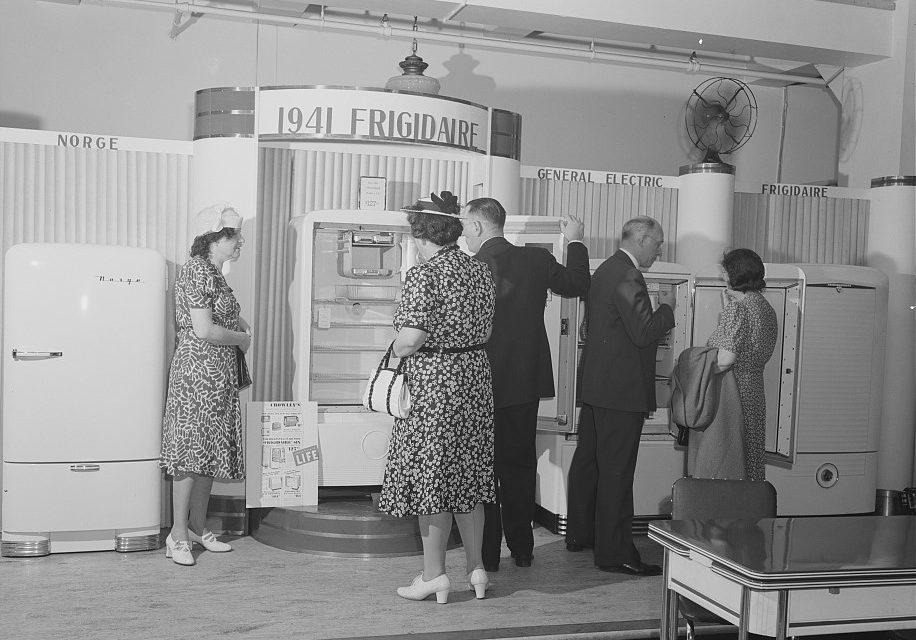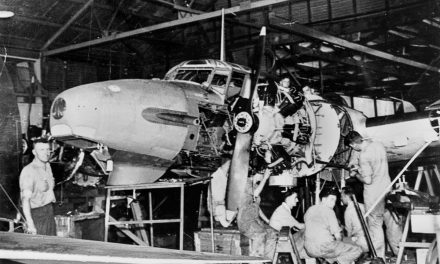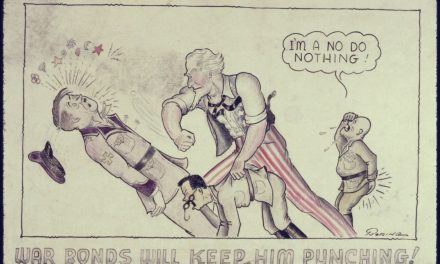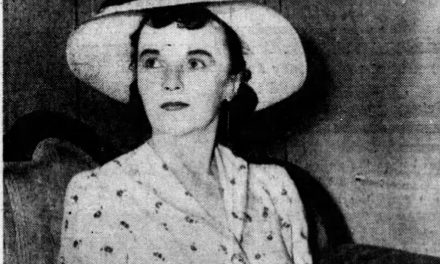War production has revived the United States’ economy following years in a depression, with dramatic increases in employment opportunities and productivity. But the nation could be in for an even greater boom after the fighting ends.
Spikes in spending are expected to follow the war, according to Arthur Upgren, chief of the national economics unit of the Department of Commerce. Upgren, who presented his ideas in a meeting of the American Marketing Association.
The prediction for a spending wave is based on the outcome of the First World War. That’s when large shipments of goods were sent to Europe, consumers increased spending on goods and invested in their production, and the residential housing market boomed. War needs and demand for consumer goods played a major role in the output of industry, as their production mobilized an idle economy.

Shopping for refrigerators at a Detroit department store in July 1941. Pent-up demand for such products (no longer being made because factories have shifted to war production) could lead to a postwar economic boom. Photograph by Arthur S. Siegel. From Library of Congress.
“The fact is that our war production is on schedule and in some cases ahead of schedule,” said Philip Reed, Chief of the Bureau of Industry branch of the War Production Board. Reed noted that the American standard of living might suffer in the short run, because of restrictions set in place to control inflation and price freezes for retail and wholesale goods.
While those measures might be harming the profits of retailers, they have mostly gone along with the government’s orders and requests, perhaps partly because they have faith that their business will recover quickly after the war. According to Samuel Reyburn, chairman of the Associated Dry Goods Corp. (not to be confused with Speaker of the House Sam Rayburn), retailers are eager to help the war effort and understand that certain restrictions are necessary. They only ask, Reyburn says, “that unavoidable war economy restrictions be efficient and effective.”
That means retailers are sacrificing their own profits for the sake of the war effort without a guarantee of seeing a return in their losses. Meanwhile, experts predict the largest business boom in history at the end of the war.
“Unless the United States is invaded by land, we shall emerge from this war with our productive capacities at an all-time high,” said Paul Cadman, economist for the American Bankers Associations. “The raw material from our mines, quarries, oil wells and forests will be more extensively developed than at any time in our history. We will have the largest supply of skilled labor any country has ever enjoyed in the entire history of the world.”
Despite the projected economic surge, the actions of the House Ways and Means Committee show a cautious outlook for major corporations. The committee has proposed reimbursements to ease the transition into peacetime for corporations.
Cadman also noted that a business boom is “not only desirable, but necessary” for the U.S. to pay off the prospective $200 billion of war debt. The effort to pay off that debt may put significant stress on the average American household.
“The Treasury Department estimates that three-fourths of the families in the United States have incomes of less than $2,500 a year,” Senator Millard Tydings said. “Since in this group there are nearly all the families in the nation, obviously this is the only place where more money can be obtained … to pay the costs of war.”
Pending tax increases would be “pretty steep” according to Robert Doughton, chairman of the House Ways and Means Committee. He warned the committee against making taxes too high and said they must be careful “to keep our national economy going.”
Arthur Upgren of the Department of Commerce said the favorable prospects for the postwar industry in the U.S. outweigh anything negative. While high taxes and a temporary decline in national income are possible, an Allied victory would likely lead to a brighter economic future for the U.S.: a higher national income, steady consumer demand, and cash flooding into the economy as citizens redeem their war bonds.
Sources:
“Spending wave seen after war.” (1942, May 30). The Washington Post.
“‘Too high’ taxes may impede war effort, Doughton warns.” (1942, May 11). The Washington Post.
“U.S. living standard will be major casualty, Philip D. Reed declares.” (1942, May 18). Wall Street Journal.
“Post-War Boom Seen: Politics and labor rapped by banker.” (1942, May 16). The New York Times.





